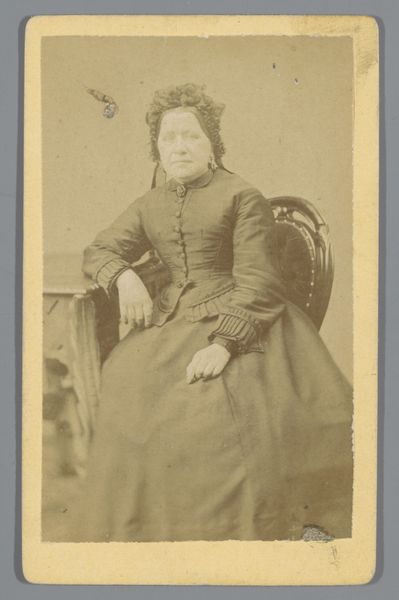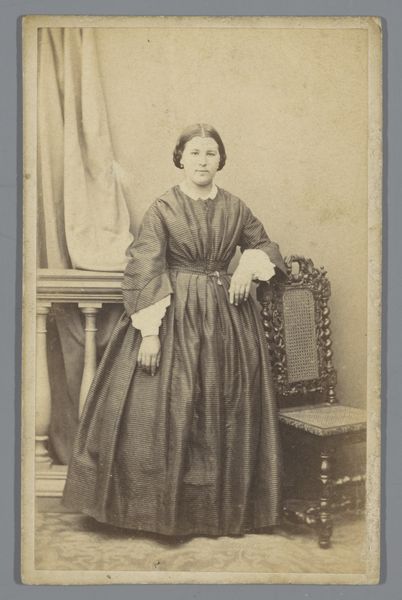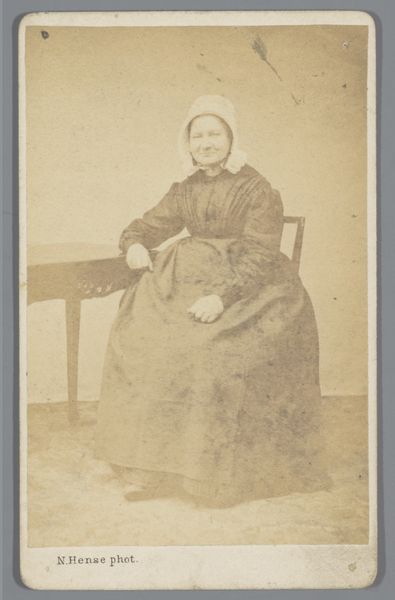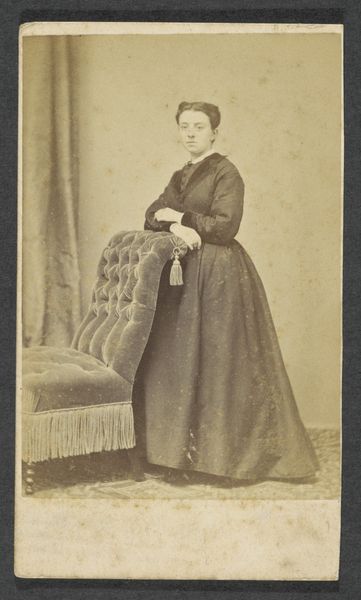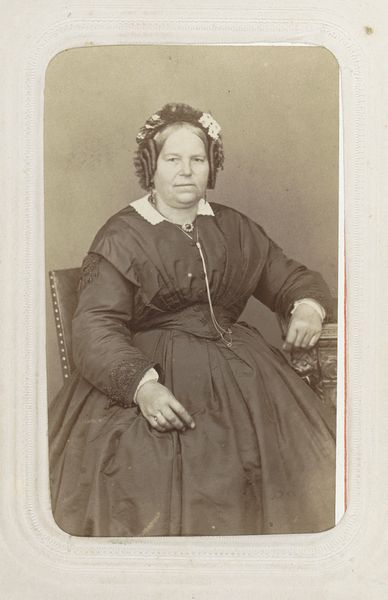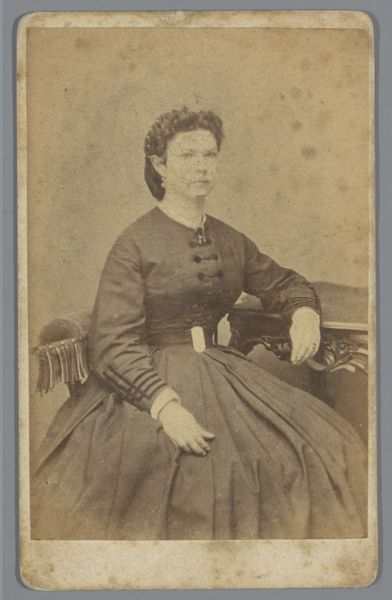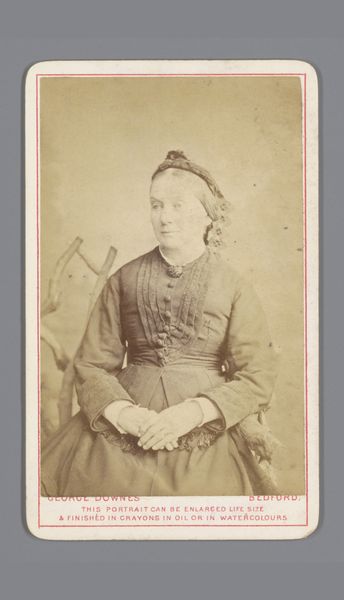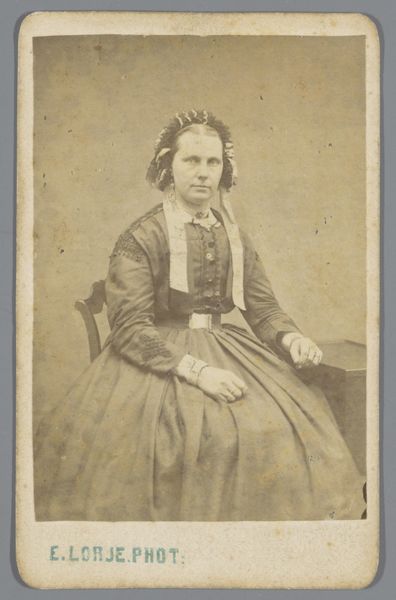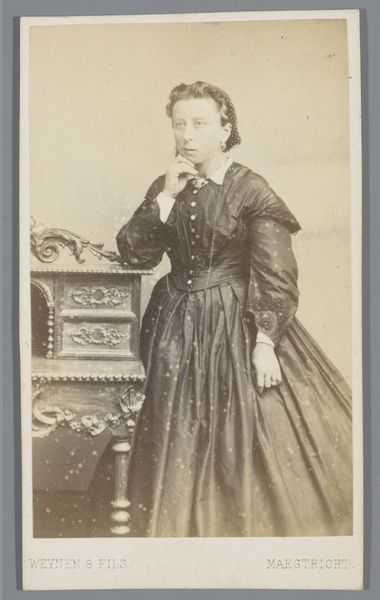
photography, gelatin-silver-print
#
portrait
#
photography
#
coloured pencil
#
gelatin-silver-print
#
realism
Dimensions: height 101 mm, width 57 mm
Copyright: Rijks Museum: Open Domain
This carte-de-visite, or visiting card, by P. Weijnen & Fils, is a small photographic print on paper, a popular format in the mid-19th century. The photographic process itself – likely albumen printing, using paper coated with egg white – was relatively new at the time, a fascinating blend of chemistry and artistry. Consider how the image’s sepia tone and soft focus, inherent to the process, lend a nostalgic air, almost like a hazy memory. The sitter’s dark, voluminous dress, made from a densely woven fabric, absorbs light, contrasting with the delicate lace trim. We see a woman, likely middle class, signaling the increasing accessibility of photography beyond the elite. These cards weren’t just portraits, they were tokens of social exchange, and subtle markers of status. The mass production of these images reflects the rise of industrial capitalism, yet each one also holds a unique human presence. It reminds us that even in an age of mechanization, the personal and the handmade still find their place.
Comments
No comments
Be the first to comment and join the conversation on the ultimate creative platform.



